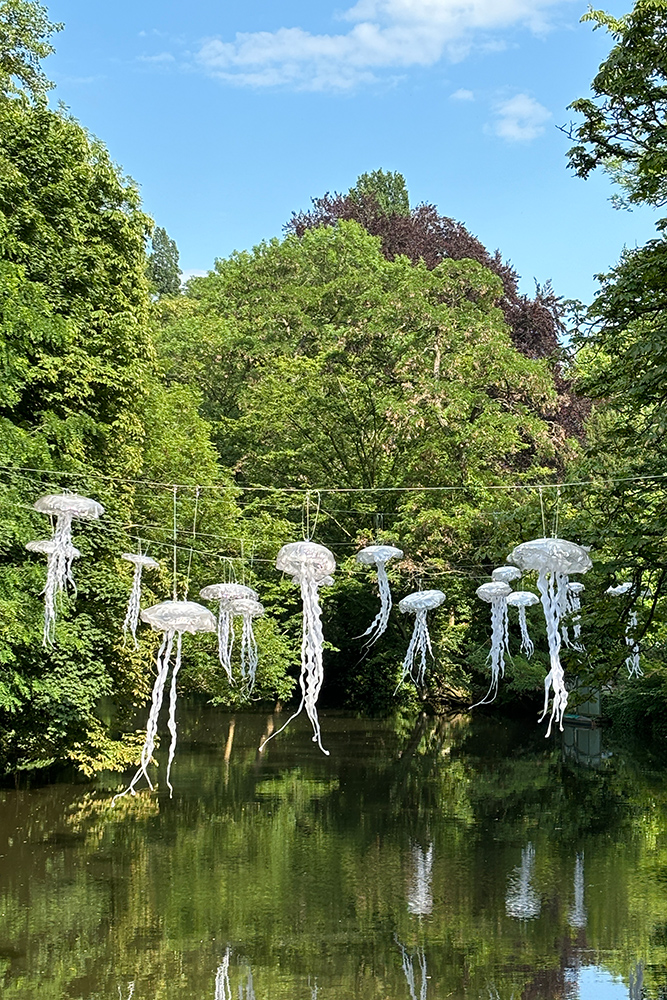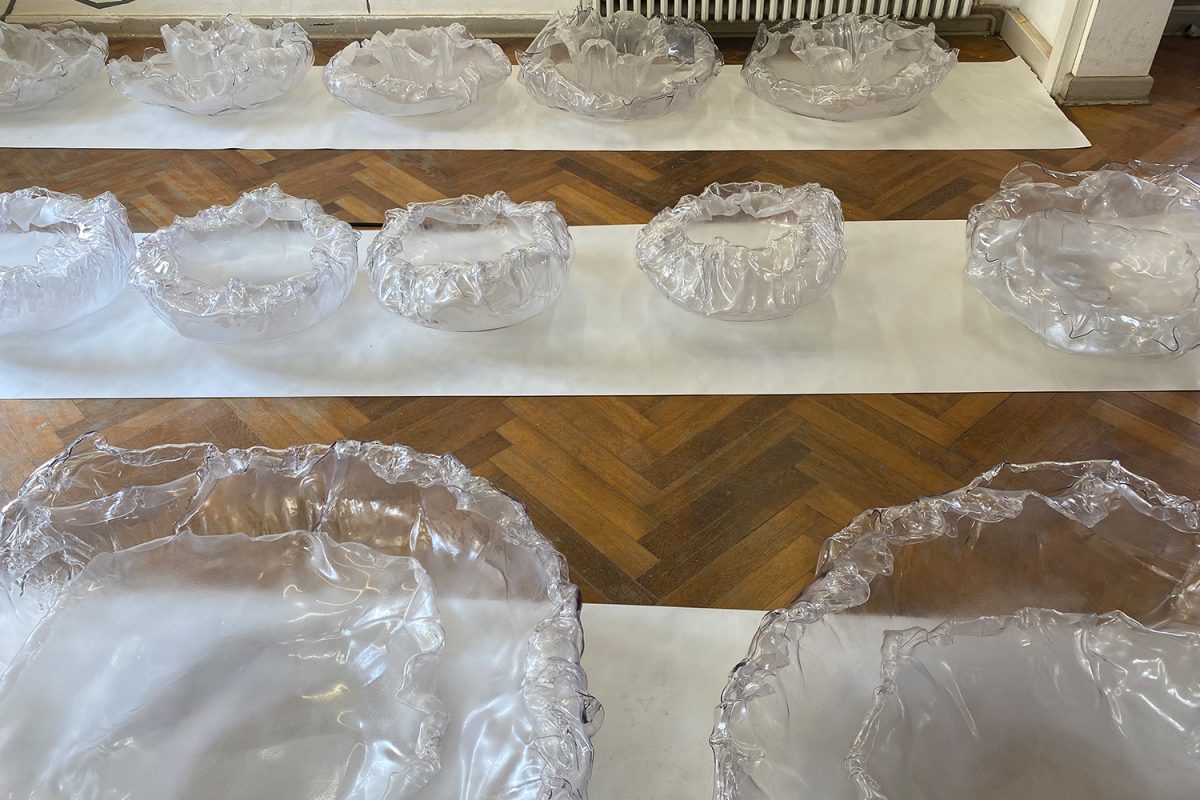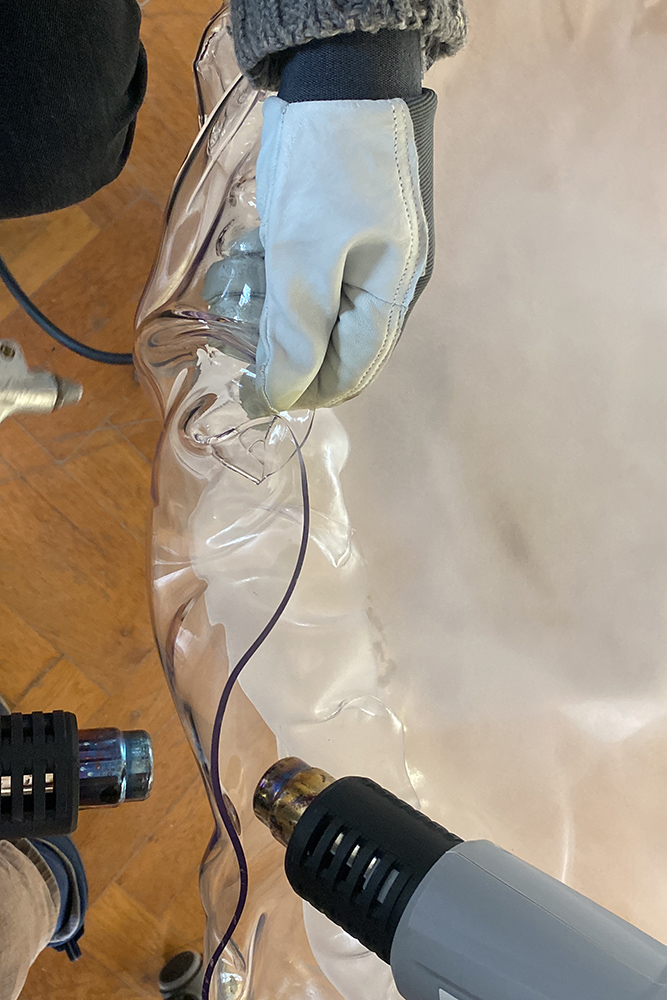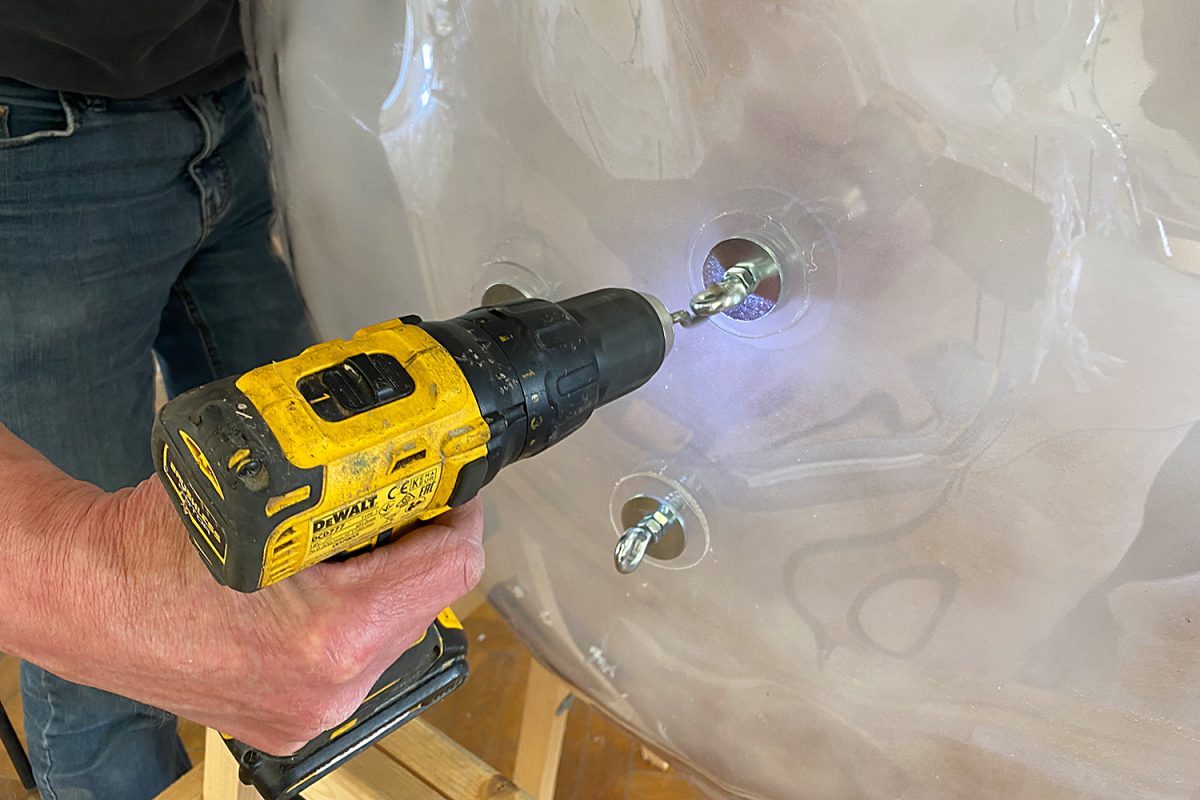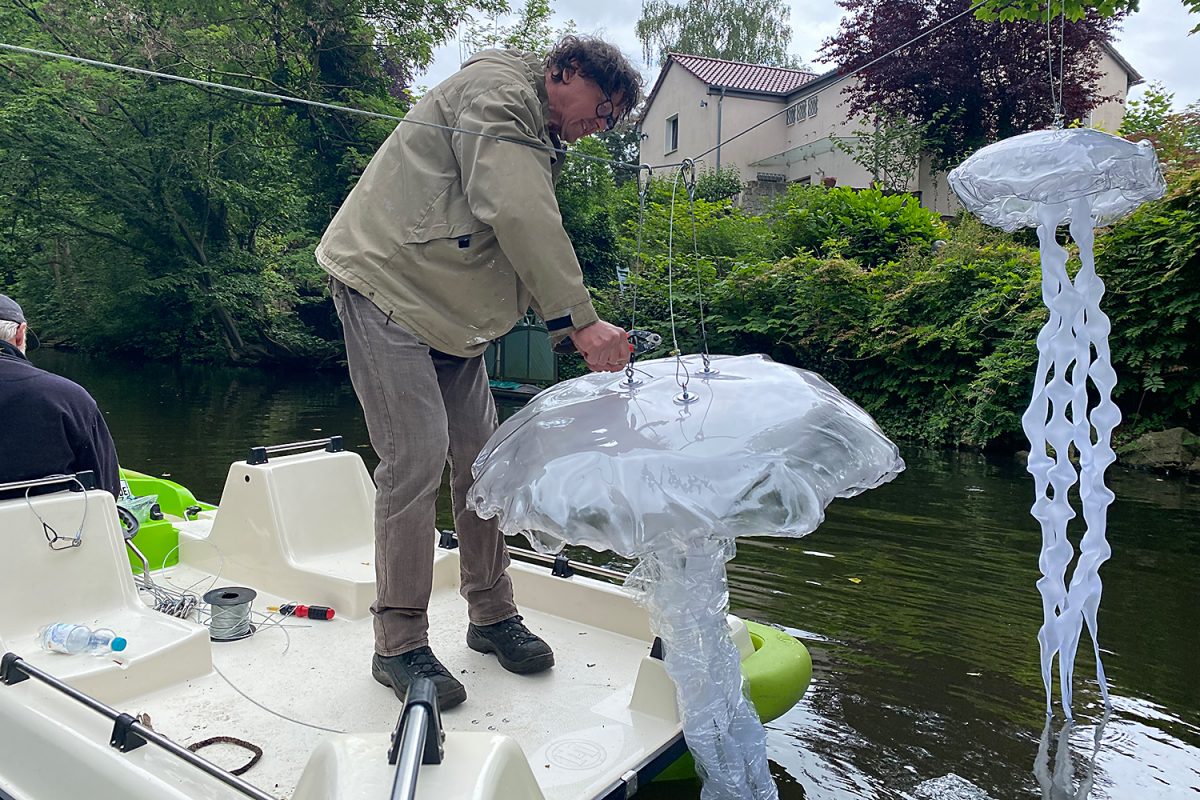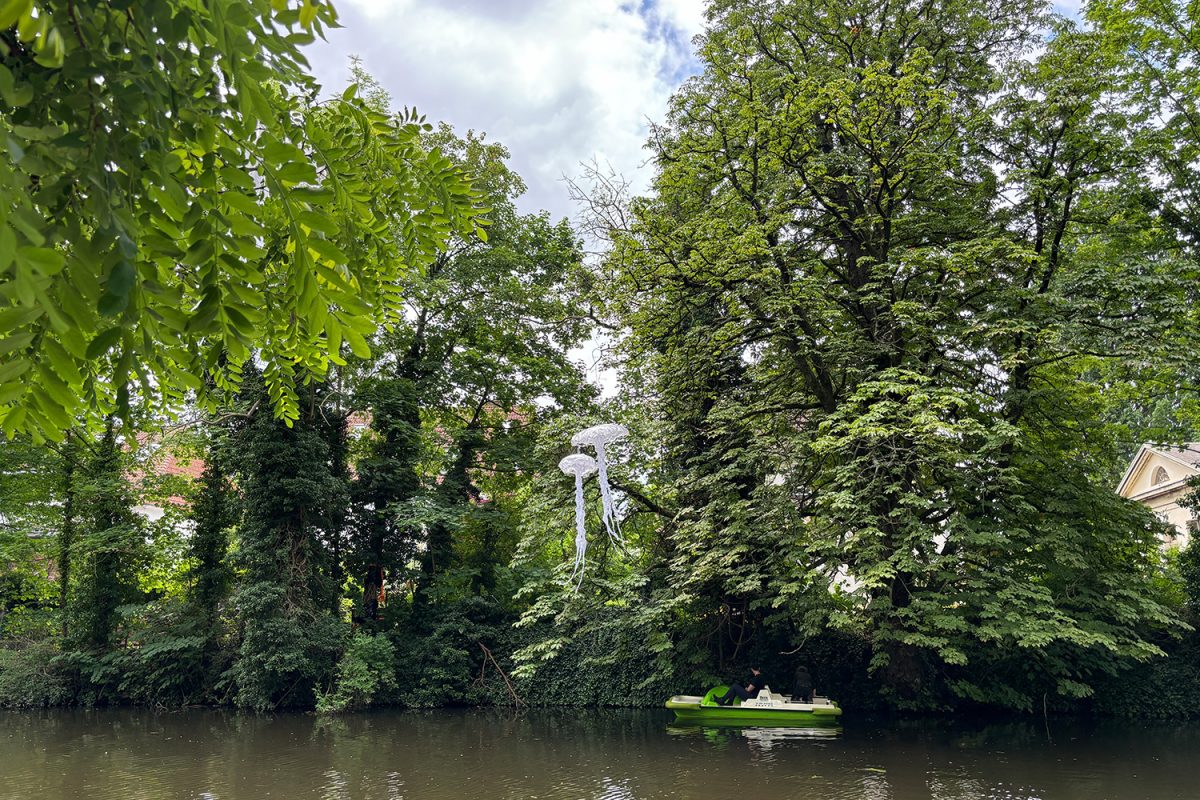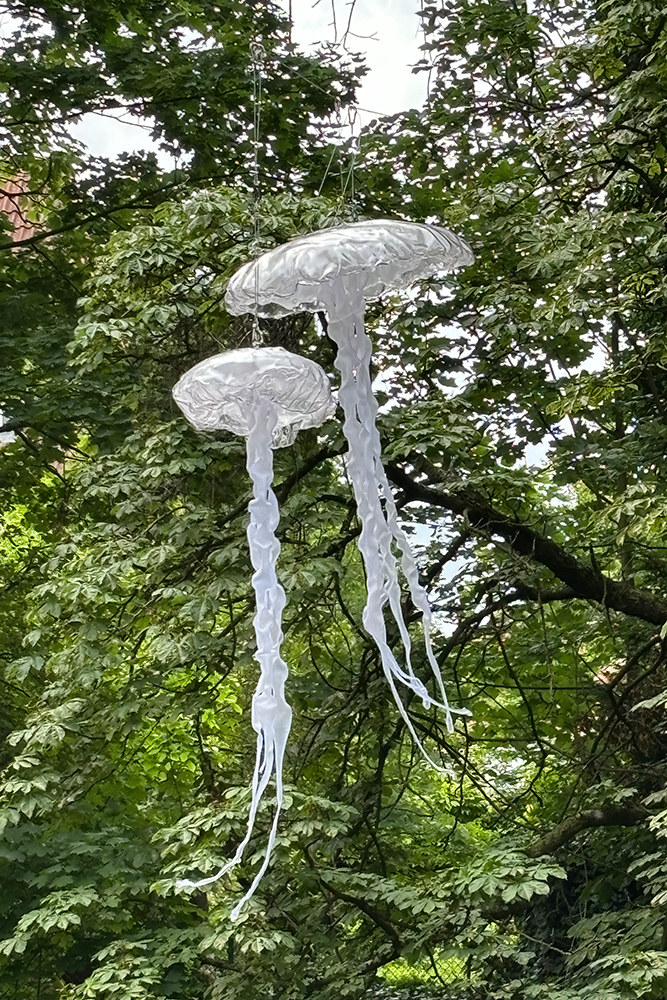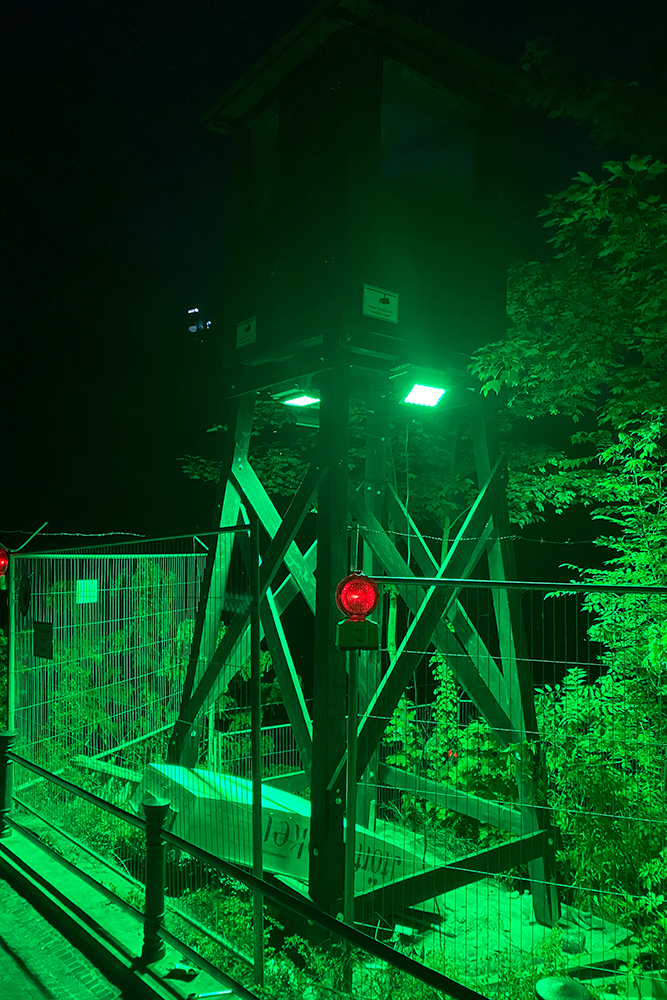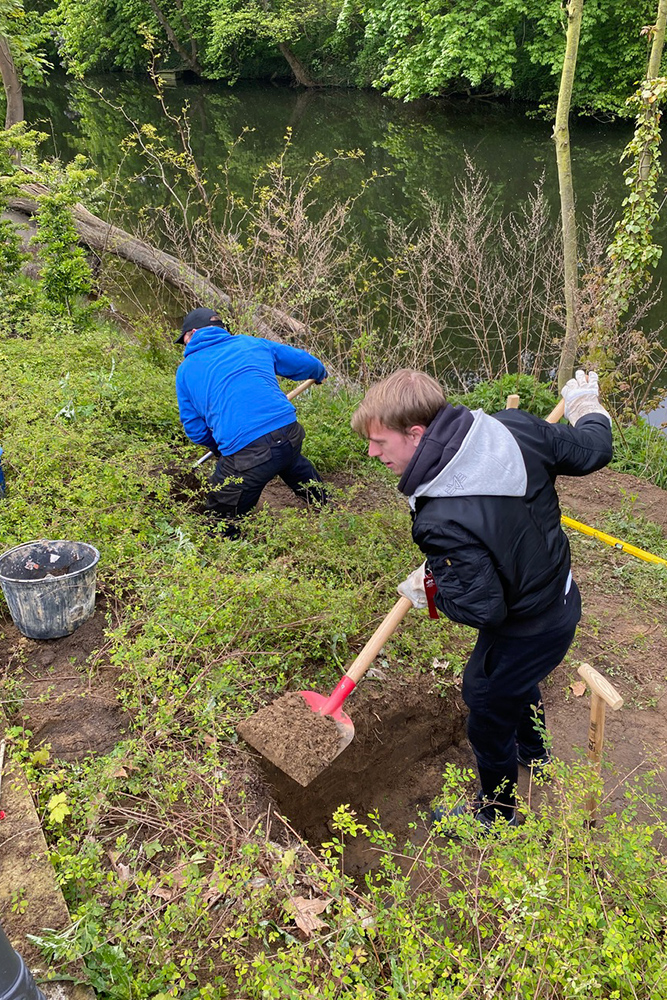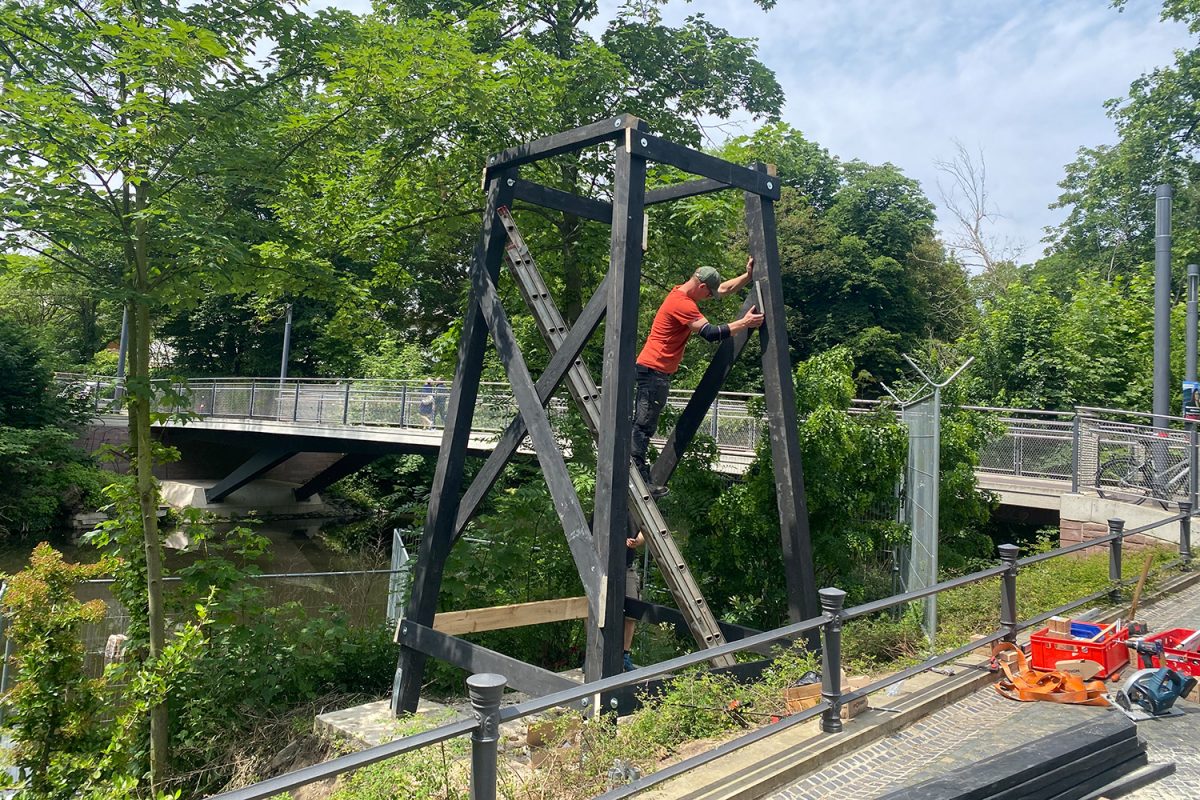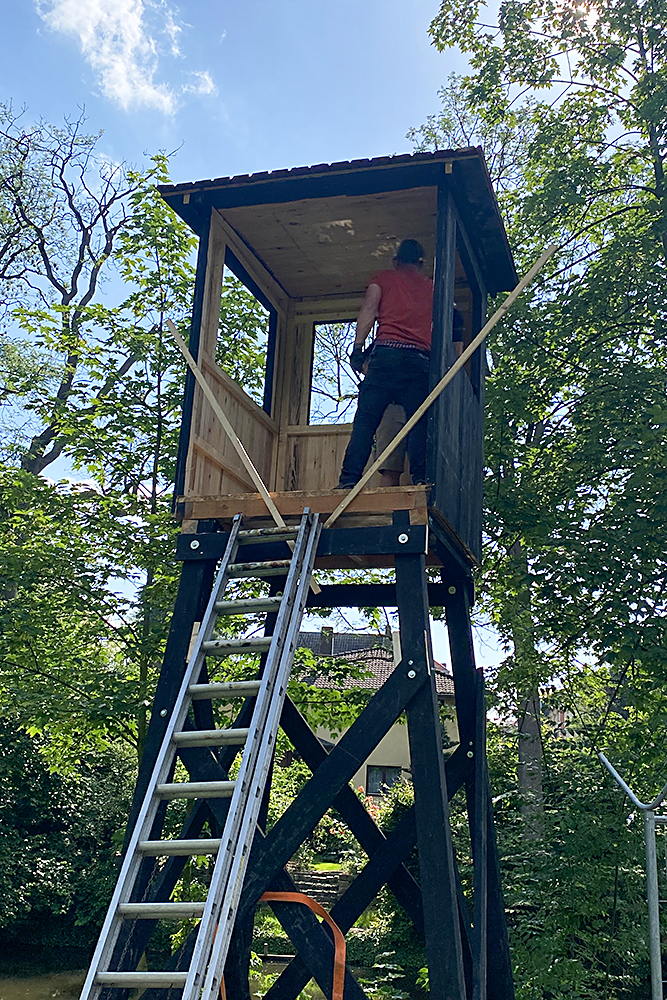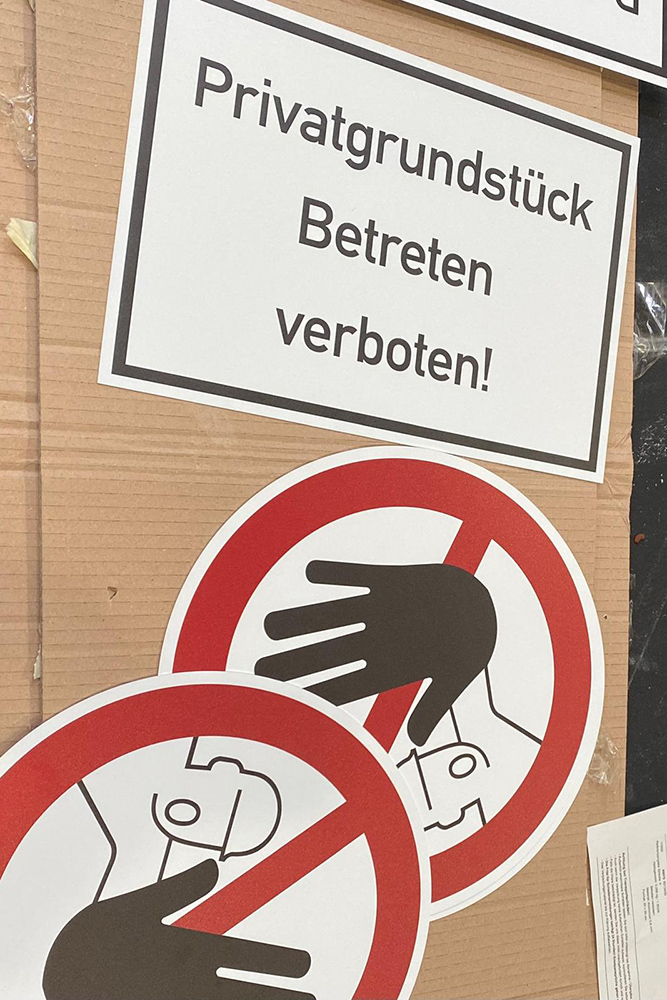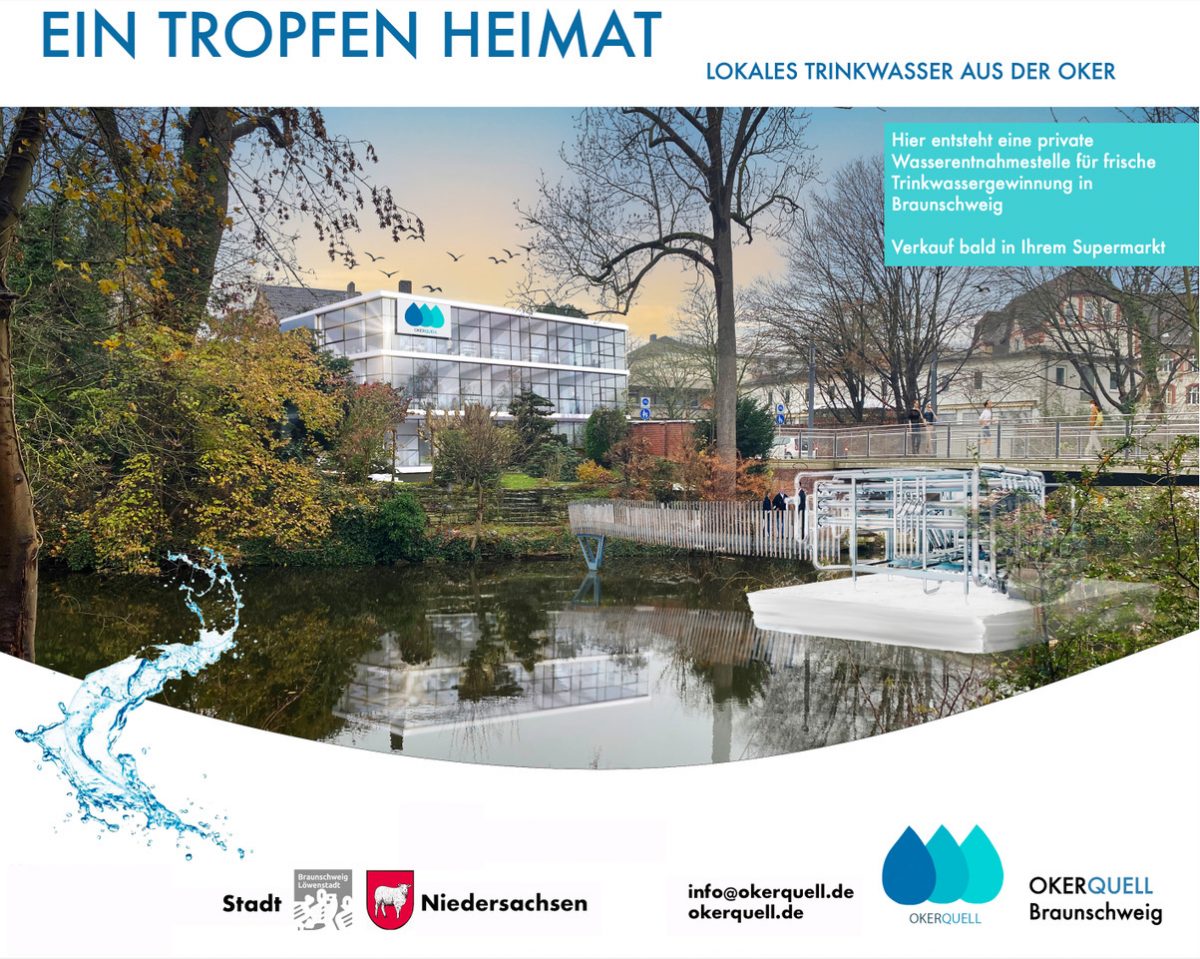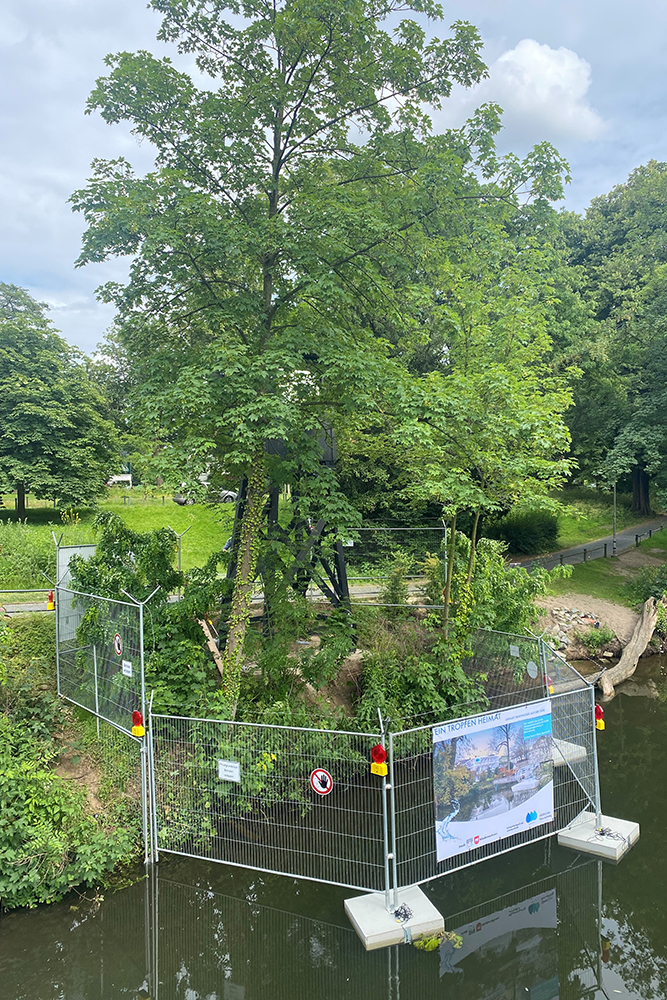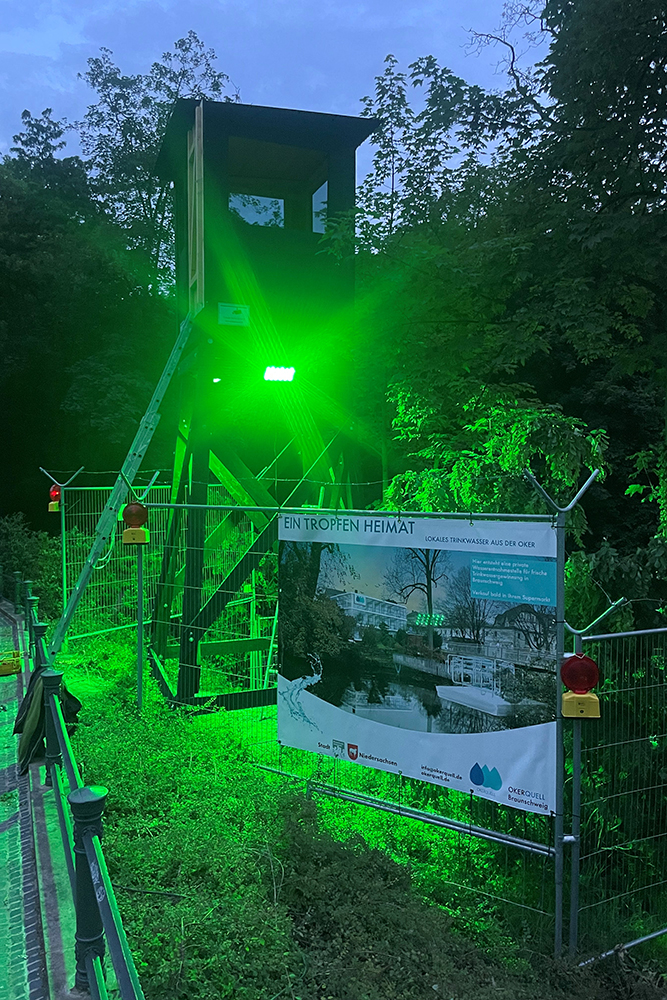When jellyfish float above the Oker river TU Braunschweig with two light installations on the Braunschweig Light Parcours
They float like ghosts over the Oker river, gently swaying in the wind: 20 transparent jellyfish peeking out from between the trees east of the Wendentorbrücke. The installation “West on Northwest” is one of 13 works of art on display on the Braunschweig Light Trail from 15 June. The jellyfish were created at the Institute for Architecture-Related Art at TU Braunschweig, which is participating in this year’s light art exhibition with two projects. In addition to the jellyfish, ‘No trespassing’, which can be seen on the Sidonienbrücke, is also attracting attention.
The Institute for Architecture-Related Art (IAK) has long been concerned with the issues of resource scarcity and climate protection, which the IAK team also makes visible through artistic projects in public spaces. Under the direction of Professor Folke Köbberling, Bernd Schulz and Sina Heffner, the Institute has developed two projects for the 2024 Light Parcours. The students were asked to develop ideas on current social and environmental issues. Last summer, the institute presented six of the more than 30 designs at the Light Parcours model exhibition at the Braunschweig Kunstverein. A jury selected two of the designs, which dealt with the privatisation of drinking water and the warming and overfishing of the oceans, to be realised with the students.
Jellyfish multiply due to warming seas
Even before the start of the light trail, the jellyfish had become a popular photo motif. Time and again, pedestrians and cyclists stop on the Wendentorbrücke bridge to admire the artwork and take pictures with their smartphones.
But the swarm of jellyfish over the Oker is not just an eye-catcher, it is also intended to draw attention to a pressing problem: the warming of the world’s oceans is putting the ecosystem under stress and upsetting the balance of the underwater world. Some marine animals are migrating to colder waters or even dying. Jellyfish, on the other hand, are proliferating due to rising temperatures, overfishing and a lack of predators.
Indicator of climate change
Architecture student Alma Barwitzki has created a striking image for this complex problem: jellyfish floating in the landscape of Niedersachsen. “When I first thought about our impromptu theme of ‘sustainability and water’, I immediately thought of a swarm of jellyfish,” says Alma Barwitzki. “They are an indicator of climate change.” The student from Stralsund has had her own experience of jellyfish swarms on the Baltic coast.
The title of the intervention, “West to Northwest”, refers to the main wind direction in Northern Europe, which is now bringing the jellyfish as far as Braunschweig with the artwork. With this project, Braunschweig also becomes a coastal city. Together with the artists Sina Heffner and Bernd Schulz from the team of the Institute for Architecture-Related Art, the artistic intervention was further developed and realised. The jellyfish, made from waste from the plastics industry, now hang on ropes at different heights above the river. Black light spotlights make the jellyfish glow in the dark on the Wendentorbrücke every evening.
Video: Jonas Walter/TU Braunschweig
No trespassing!
Continuing west along the Oker via the Inselwall, you reach the Sidonienbrücke and the next light trail project by the Institute for Architecture-Related Art. This project also addresses a current issue: the privatisation of the resource water. The installation suggests a change of ownership. The area by the bridge, which was previously open to the public, has been closed off with construction fencing. Inside, there is a large black watchtower, behind whose mirrored panes one might suspect security personnel. A construction sign indicates the purpose of the building work. The fictitious start-up company “OkerQuell” has acquired this area in order to do business with the Oker water.
The planned company headquarters and water pumping station in the Okerum floodplain are visualised. Interested parties are directed to a dedicated website. At night, with its green lights and red warning lights, the construction site looks like a dystopian vision. “No trespassing”, the title of the installation, is based on a design by student David Radivojevic and was further developed for the site-specific situation by students in a seminar led by Professor Folke Köbberling, Sina Heffner and Bernd Schulz. Will the people of Braunschweig recognise the new ownership situation?
As part of the “No Trespassing” project, the film “Bottled Life”, which deals with the global privatisation of water, will be shown in the open-air cinema of TU Braunschweig on 4 July. A panel discussion in mid-July will extend the discursive exchange on this controversial topic.
Project participants
The following people contributed to the projects led by Professor Folke Köbberling, Bernd Schulz and Sina Heffner:
Alma Barwitzki, Ghazal Bavandsavadkohi, Jonna Berg, Paul Diebold, Joost Dräger, Lara Dumoutier, Hannah Eickenjäger, Carolina Groß, Mia Gutschalk, Anni Hufnagel, Mitja Kamp, Hanfeng Liu, Jonas Maaß, Jonas Manigel, Niklas Matz, Laura Neumann, Merle Näth, Linus Starmann, Nico Schlaak, Mishale Senft, Kira Sperling, Hannah Saraiva Pfeifer, Katharina Plate, Rahel von Freier, Finja Wagener, Jonas Walter.


